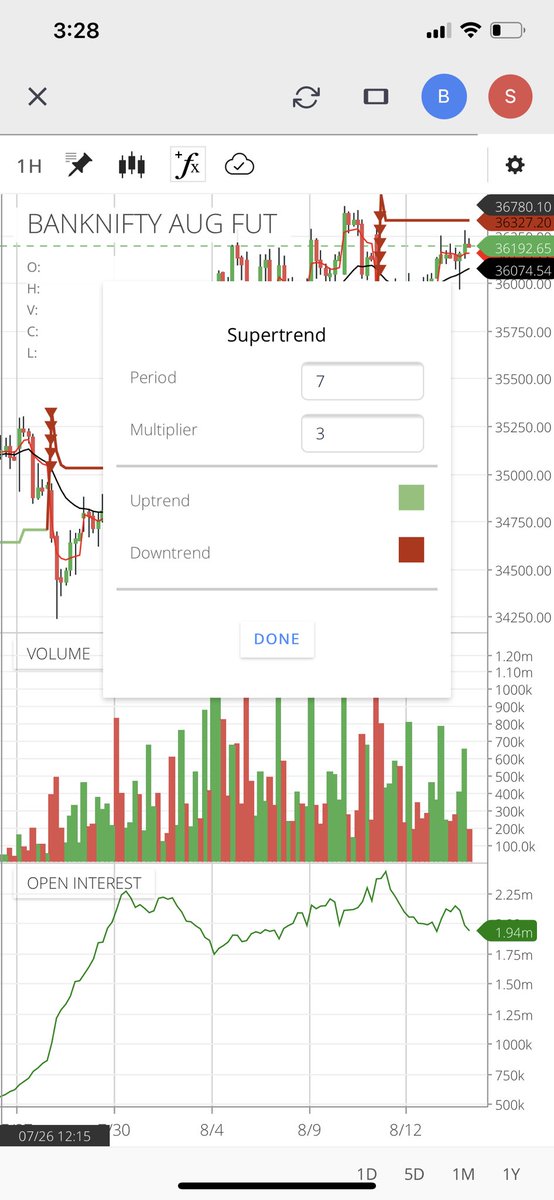Do with your own. Don’t pay them.
There is a supertrend indicator in zerodha. For swing go with 60 min chart. Check with different numbers in period and multiplier section.
Check success rate of buy and sell signal generated by system. Apply number according to decide buy and sell for swing trade.

More from Mitesh Patel
17% need workshop. 😂😀
This is my simple trading.
How many are believing only in simple trading system?
— Mitesh Patel (@Mitesh_Engr) April 3, 2021
This is my simple trading.
I don\u2019t have any magic.
— Mitesh Patel (@Mitesh_Engr) January 7, 2021
Next week I will prefer to sell put in between strike 30500-31000 as shown in pic. Will manage upto 31000.
If breaks 31000 as first down support then will exit put nearby 31000 strike and will sell
31500 call ( will act as resistance again )
Simple hai na pic.twitter.com/hPLIMq3tSe























